Comvita, UMFHA & the Australian Question
- Bruce Roscoe
- Sep 2
- 15 min read
Updated: Sep 7
In our June edition report Australian Attack ‘Disrespectful and Misleading’, Says Mānuka Charitable Trust, we laid bare the awkward truth of the intimate relationship between Hive & Wellness Australia Pty Ltd and Comvita Ltd. In this report, Bruce Roscoe sketches the historical context of that closeness and unearths a trove of details that illuminate the fullness of the cooperation.
By Bruce Roscoe
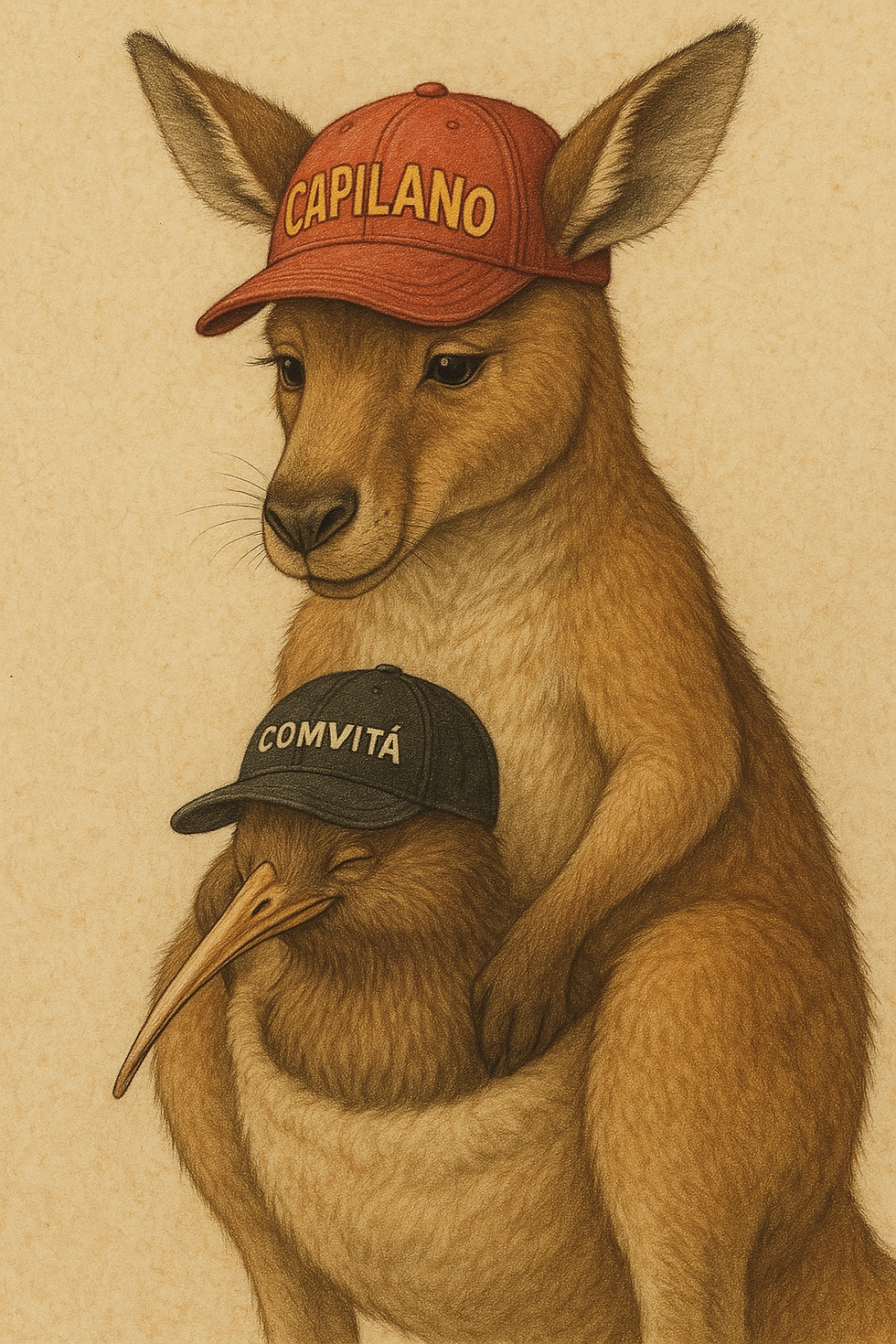
Like the ties between neighbouring countries — Canada and the US, Ireland and England, South Korea and Japan — the relationship between the New Zealand and Australian honey industries is complex. Rivalry coexists with cooperation, bad blood and benevolence appear as two sides of the same coin. And in the case of mānuka honey, bilateral bonds are more strongly forged than many would suspect.
In halcyon days when mānuka honey demand was seen as rising forever, Comvita became concerned over possible resource scarcity. (That concern is reflected today in the planting since 2017 of 15 mānuka forests covering 6,300 hectares across the central North Island plateau and Wairarapa, according to the company's June 2024 annual report.)
In the 10 years to the launch of the gruelling manuka honey certification trademark case (hereafter referred to as ‘the trademark case’) in 2015, mānuka-driven demand had propelled honey export value 7.9 times from NZD36.0m to NZD285.1m. (Five years later, it would peak at NZD505m.)
As early as 2010 such dizzying growth had compelled both Comvita and UMF Honey Association (UMFHA) to cultivate Australian honey industry relationships with a view to securing additional manuka honey supply. Although New Zealand businesses could not import bulk manuka honey from across the Tasman, they would be free to export it in bulk or retail pack from Australia, where leptospermum scoparium trees were abundant from the south coast of New South Wales, through to western Victoria and Tasmania.
Aware the nascent Australian manuka industry would likely grow quickly, UMFHA sought to influence the method by which Australian producers would grade the honey.
“How's it going with Tasmanian Manuka?”
John Rawcliffe, UMFHA administrator, in 2011 emailed Nicola Charles, managing director of Blue Hills Honey, Tasmania: "I congratulate you on setting up a company to manage your active Manuka honey…As discussed, the Active Manuka Honey Association Inc. (now UMFHA) is keen to work with you over some core standards..."[1]

The following year Mr Wright of Comvita emailed the same Ms Charles: "We have been giving more thought to the idea of sourcing honey from other countries and would like to start with our friendly neighbours!"[2] In 2014 Ms Charles received another email from Comvita, asking "How's it going with Tasmanian Manuka?"[3]
At the time of those love-calls, Comvita was on a roll. In the five years to March 2012, Comvita’s annual sales had pole-vaulted to NZD95.9m from NZD39.3m. Australia had become the company’s largest single-country market, taking about a quarter of all that it had to sell.
Comvita had deployed a team of seven since 2009-10, Toyota Prius hybrid cars were standard issue, and Dr Ralf Schlothaeur, Comvita’s chief technical officer, had buddied-up with Australian scholars to engage in trans-Tasman health product-related research that was funded by the Australian government.[4]
“1,950 directly serviced retail customers. 20,000 website hits in Australia per month with over 6,000 customers registered online in the first year…” Comvita’s March 2012 year annual report gushed. Chief executive officer Brett Hewlett said: “Australia has proven to be a dependable and consistent source of growth for Comvita”.[5]
Settling in South Brisbane
Australian inroads expanded after a network of distributors was replaced with an in-house customer service and logistics team in 2010-2011. While foreign businesses could be expected to base operations in Sydney or Melbourne, Comvita charted a northerly course and chose south Brisbane, where it located two wholly owned subsidiaries — Comvita Health Pty Ltd followed by Comvita Australia Pty Ltd.
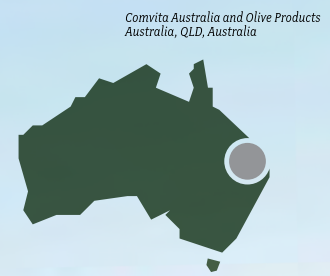
The first subsidiary was addressed to the corner of Miles Platting & Logan roads in Eight Mile Plains. That address is 17.8 kilometers to 399 Archerfield Road, Richlands, home to Capilano Honey Ltd, Australia’s largest honey packing and sales company. (Capilano is now a brand owned by Hive & Wellness Australia Pty Ltd.)
The second was sited at 10 Edmonstone Street, 18.3 kilometers to the same Capilano offices and packing plant, whose address today is shared with Australian Manuka Honey Association. Comvita was operating in Capilano’s near orbit — meet for lunch from either subsidiary’s office within half an hour.
Since July 2023, after about a decade at Edmonstone Street, Comvita Australia has occupied premises in Fortitude Valley on the border of the central business district. Anchoring at Brisbane has also served Comvita’s olive plantation and olive leaf extract processing plant at 767 Bischoffs Road, Coominya, some 90km west.[6]
Cross-Pollination
Comvita and Capilano had begun pollinating each other’s flowers in earnest in 2007 when Comvita purchased Capilano’s subsidiary Medihoney Pty Ltd. Capilano agreed a price of AUD6m — which Comvita would pay in AUD500,000 cash and the remainder in shares issued at NZD4.05 each. As a result of this transaction, according to the Capilano release of 18 April 2007, Capilano would emerge the owner of 8% of Comvita. Capilano’s investment was short-lived as by December 2009 it had sold the holding.[7]
“Medihoney” would become a metaphor for obfuscation over what could and could not be called “manuka” in the leptospermum genus of plants. While Comvita could source manuka honey from only the scoparium species, as no other in New Zealand lent itself to commercial exploitation, some 80 species grew in Australia, and Capilano believed it could use the name manuka for several of these, notably polygalifolium, commonly called jellybush and which is plentiful in Queensland and New South Wales.[8]
Scholars, including Peter Molan, professor of biological sciences and director of the Honey Research Unit at University of Waikato, jettisoned the species name. In the report “Medical Honey for Wound Care — Still the ‘Latest Resort’?” six scholars wrote: “The medical honey, our clinical experience refers to (MediHoneyTM), consists of standard mixture of different Leptospermum spp. honeys”. They doubled down in a report table of terms, defining MediHoneyTM as “a mixture of two honeys derived from Australia and New Zealand containing…Leptospermum compounds”.[9]
Which it could not be. In order to be a “mixture”, Comvita would have needed to supply monofloral manuka honey to Capilano in bulk for blending with an Australian honey from one or several of the leptospermum species. The reverse could not have occurred, as New Zealand allows honey imports only rarely and by special permit.
Manuka Fudge
More likely, as owner of the Australia-registered company, Comvita would look to export Australian leptospermum species honey for offshore manufacture into wound-care products, and it would do the same from New Zealand. But Australia held the edge, “because its manuka is cheaper”, Scott Coulter, Comvita chief executive officer, would later tell the Wall Street Journal.[10] The manuka fudge is first baked here, though no need was felt to call anything “manuka”. “Clinical evidence points to MEDHOHONEY® with Active Leptospermum Honey…” Comvita wrote in product introductions within three years of the Medihoney acquisition.[11]
Comvita’s 2007 acquisition of Medihoney was the first of two transactions that — figuratively speaking but in some cases also literally — would put Comvita and Capilano hives on the back of the same truck. The second transaction was as burning as representative trans-Tasman sports teams shedding national garb and donning a new and identical uniform.
Comvita and Capilano would not only market manuka honey under the shared name of Medihoney, they would also jointly produce the honey. The two behemoth buddies set up Medibee Apiaries Pty Ltd, a 50:50 joint-venture, registered in May 2016, that would operate leptospermum honey-producing apiaries. Capilano sold beekeeping assets for AUD$9.2m into the venture, which would “deliver premium honey for a range of medical and natural health products”, according to Capilano managing director Ben McKee.[12]
Neither company used the word “manuka” in their announcement about the venture.[13] But reporting to shareholders the following year, Capilano dropped the fudge: “Manuka specialist” Comvita was “focusing on increasing the production and security of Australian Manuka honey supply” and Medibee Apiaries was the “single largest supplier of Manuka to Capilano again this financial year”.[14]
Comvita loaned NZD4.7m to the joint venture in its first year of operation and further guaranteed a bank loan of AUD5.5m. In the year to June 2024, Comvita loaned the venture NZD136,000 while in the same financial statement recorded and wrote off that loan, thus making it a gift. Comvita’s compatriot beekeepers may wish they could receive comparable largesse.
The Conflict of Alliance
In only the first two of 17 financial statements Comvita has issued since the establishment of Medibee Apiaries is the venture’s name recorded correctly as Medibee Apiaries Pty Ltd. Various and confusing abbreviations are used in the subsequent 15 statements as though in an effort to deflect attention from an alliance that many beekeepers at home would view as a betrayal.
A UMFHA director and licensee told the association’s 4 February 2020 executive meeting that he traded in bulk manuka honey within Australia. That admission was received without alarm as the minutes did not record it. Instead, it is noted in minutes for the meeting held more than two months later on 21 April 2020. The director had added that his bulk trade was conducted in IBCs (intermediate bulk containers) which hold several times the volume of the standard 300-kilogram drum.
As late as July 2020, UMFHA resolved to communicate "policy in relation to Australian manuka honey" to licensees. The notice issued by Mr Rawcliffe threatened licence revocation for “trading of Australian honey sourced from any of the various leptospermum plant species present in Australia (including the sale or purchase of such honey in bulk where the licensee’s brand or licence number is not visible to the end consumer)”.[15]
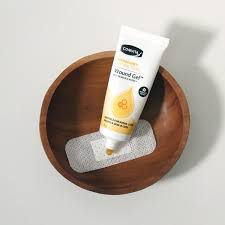
Although UMFHA had ruled that trading in manuka honey over the Tasman was out, Comvita continued to play an away game in equal partnership with Australia’s flagship leptospermum honey producer and exporter. At the peak of its enthusiasm for the trees on the other side, Comvita wholly owned and operated seven subsidiaries in addition to the Medibee venture.
(In addition to business units on the ground, Comvita Ltd, and before it Comvita New Zealand Ltd, since 1999 maintained an ABN (Australian Business Number) with the Australian Business Register, for ease of conducting business directly with Australian companies and facilitating communication with Australian government agencies.[16])
Comvita had inked the joint venture agreement while the trademark case was in progress — UMFHA had made the first filing with the New Zealand Intellectual Property Office in August 2015.
Consider — for each of the eight years the 2015-2023 trademark case was argued at a cost in the low millions of dollars, Comvita was equal partner in a venture described by Ben McKee, chief operating officer of Hive & Wellness, formerly chief executive officer of Capilano Ltd, and director of the Medibee Apiaries venture itself, as “one of the biggest Manuka producers in Australia.”[17]
Not that Comvita in spirit supported the trademark case. Comvita’s Coulter advised the Wall Street Journal: "They have the same type of plant and they produce the same type of honey from it", he said, "so it's hard to argue that it's the sole rights of NZ to sell that type of honey.”[18]
The Unspoken Donation
Yet without Comvita, there may not have been a trademark case. And there may not even be a UMFHA. Manuka Honey Appellation Society, the UMFHA mirror body that managed the filings, records a Comvita donation of NZD250,000 for the year to March 2022. Comvita's was the largest of only two such contributions. (The second was from Manuka Health New Zealand Ltd for NZD100,000 in the same year.)[19]
No record of Comvita's donation can be found in financial statements or annual reports or other documents disclosed to shareholders or in releases to media. Yet Comvita in past investor presentations and annual reports has publicised contributions of much smaller amounts, such as products worth NZD10,000 to the Japanese Red Cross (March 2022 year).
No evidence of Comvita public utterance in support of the New Zealand position in the trademark case can be found. Neither does any Comvita website contain even a sentence on the subject. By contrast, the Capilano website, under a "Learn" tab and subject title "History of Australian Manuka", devotes 1,210 words, with 30 entries for 28 years from 1882 through 2019, to the ultimately successful Australian argument.[20]
The word “Australia” cannot even be found on the UMFHA website. The New Zealand case is made but one has to search for it — for example, under the “News” tab, “Tests Show Again that Only 100% New Zealand Mānuka Honey is Authentic” and under the “Researchers tab”, UMFHA describes itself as “…the world’s only mānuka honey industry organisation…”[21]
UMFHA would wither without Comvita. Assuming, as UMFHA says, that its licensees account for about 70% of retail pack monofloral manuka honey exports, Comvita in the past five years has contributed an estimated 65%, 61%, 66%, 89%, and 60% of the association’s levy income to a total of some NZD4.4m.[22] Comvita loaned NZD50,000 to UMFHA after expenses exceeded income in the year to March 2010.[23]
Australia’s Santa
UMFHA is a Santa to Australia. It freed up the “AMHA” abbreviation when it renamed its forerunner organization, the Active Manuka Honey Association, in 2011. Australian Manuka Honey Association (est. 2017) today is known as AMHA.
It loosened its grip on the testing methodology for “leptosperin”, the third of four components in the UMFTM rating system, which is now used widely (and freely) in Australia. AMHA website quotes copyrighted UMFHA website text on leptosperin.[24]
UMFHA did not trademark “leptosperin”, a word it created to describe a compound Professor Yoji Kato, University of Hyogo, identified as a manuka chemical marker and termed “leptosin” in 2012 research.[25] UMFHA has charged licensees a royalty for use of the “leptosperin” test. The royalty is paid to laboratories, which forward it to UMFHA, which in turn pays Healthcare Systems Ltd, the Japanese owner of the patented testing method.[26]
UMFHA has sold marketing licences to Australian companies, among them Bee-Power International Pty Ltd, Bee Wonderful Pty Ltd, Swisse Wellness Pty Ltd, and Ocean King (uncertain company name).
The nominally competing Molan Gold StandardTM, which is owned and operated by an upper-echelon UMFHA licensee, is used on nine manuka honey products and three manuka candy products marketed by Australian by Nature Pty Ltd, Sydney.[27]
A UMFHA licensee supplies a jarred manuka honey product to Hive & Wellness Australia. The product label, replete with New Zealand map and Ministry for Primary Industries’ RMP (risk management process) number, is printed and attached in Australia.[28]
The Cooperation That Boomeranged
Peter Brooks, a senior lecturer in chemistry at the University of the Sunshine Coast, Queensland, joined UMFHA’s manuka identification research project in early 2014.[29] This project involved the collection of manuka flower nectar samples from hundreds of sites throughout New Zealand for analysis that would identify chemical markers unique to the honey. UMFHA had “secured its relationship with the University of the Sunshine Coast, one of the parties that will be conducting verification of the testing done on the honey samples”, the association’s 3 January 2024 newsletter informed.
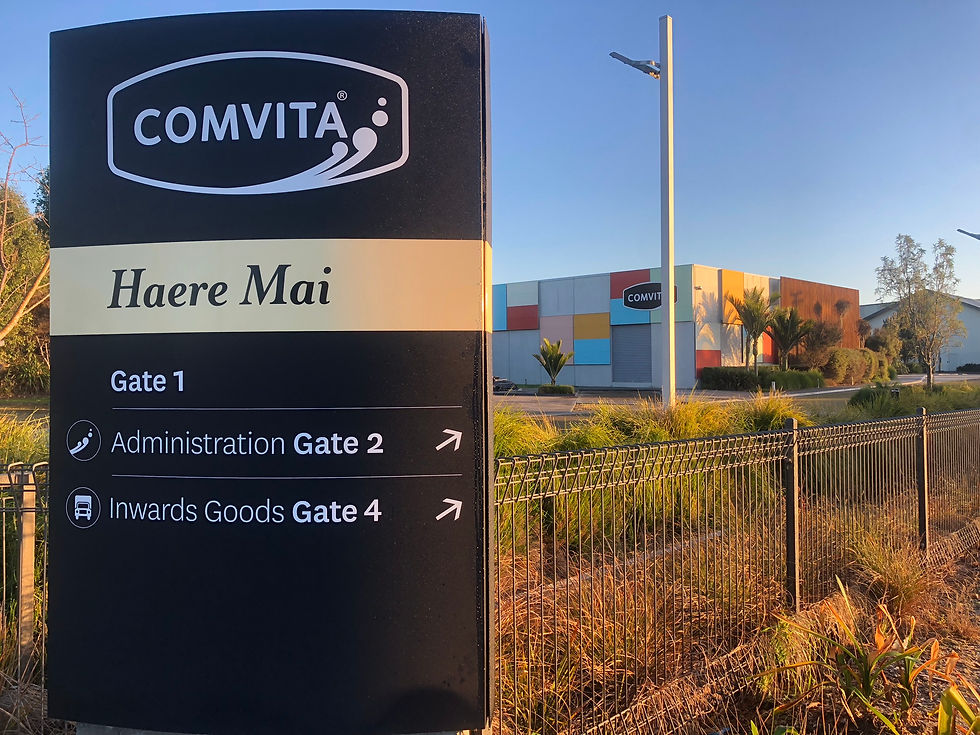
MPI’s manuka scientific definitions were four years away. But apart from battling the usual gaggle of product counterfeiters, UMFHA had become aware that Australian honey producers were seeking to redefine “manuka” to include all leptospermum honeys, which overrode the Comvita-Capilano links. Identifying chemical markers that UMFHA could hitch to its rating system would defeat fraudulent brands and future-proof the industry against posing Australians.
Dr Brooks, however, had camped only briefly in the UMFHA tent. He submitted two papers of evidence supporting Australian arguments in the trademark case. In its final ruling in favour of Australia, the New Zealand Intellectual Property Office referenced Dr Brooks and his evidence 57 times.
The Remains of Promise
As at December 2024, Medihoney Pty Ltd was one of six 100%-owned Comvita subsidiaries registered in Australia, more than double the number in any other country, including New Zealand. Bulk supply to Canada now represents the body of the medical-grade honey business.[30] The honey is shipped to Derma Sciences, a tissue regeneration specialist headquartered in Ontario that was acquired by Integra LifeSciences Holdings in 2017.
In the same year, Comvita sold the MediHoney® brand and related intellectual property to Derma Sciences for USD13.25m (and as a result would forfeit royalty payments of some NZD2.1m per year). It retained brand rights only for over-the-counter products. Derma Science would hold all regulatory approvals for Europe and the United States.
Comvita received USD7.7m for the Derma Science shares it held and, like Capilano which had divested its Comvita shareholding, would no longer share in profit growth through equity ownership.[31] Comvita’s Medihoney revenues have remained flat or declined in four of the past five years and at NZD10.2m accounted for 5.0% of total revenues in the company’s year to June 2024.
Integra LifeSciences’ website returns no search result for “manuka”. Under a product news tab, we read instead, “Integra LifeSciences’ MediHoney®, an Active Leptospermum Honey (ALH) dressing for wounds and burns...”[32]
Crossroads
The ultimate fate of Medibee Apiaries is unclear as the owners approach a crossroads, but from opposing directions. Comvita, on 29 July 2024, informed NZX of a decision "to exit from its legacy Medibee joint venture in Australia" at a loss of NZD6.9m. (Comvita also said in its 25 August 2022 investor presentation filed with NZX that its “total Mānuka harvest was 499K tonnes”, which volume was impossible.) Just-released financial statements for the June 2025 year continue to record Medibee Apiaries as an equity-accounted affiliate. Further, Comvita advanced NZD383,000 to the venture during the year. Medibee Apiaries has become a “current legacy”.
In contrast to Comvita red ink on exit, Capilano saw black on entry. It booked an AUS2.1m tax-free gain on the beekeeping assets it sold into the venture.[33]
Capilano, in the last annual report it would issue before delisting from the Australian Securities Exchange in December 2018, printed a table showing the financial performance of Medibee Apiaries for the first two reporting periods since its founding — the years to June 2017 and 2018. Net losses were AUD187,423 and AUD613,182 on revenues of AUD1,579,866 and AUD1,864,358.
Which means that the AUD1,300,792 of honey Capilano bought from the venture in the June 2018 year was sold to it at a loss. It also begs the question of which company purchased and sold the remaining AUD563,566 worth of honey if not Comvita.
Constricted by floods in the north, droughts throughout the south, and bushfires to the west, the Medibee venture may never have been profitable. Comvita has recorded losses of NZD1.4m in sum for all equity accounted affiliates for eight reporting years of the venture.
The Interrogation of Identity
The “Australian question” interrogates identity — collaborator or competitor, friend or foe? The question may be too simplistic in a difficult business that demands opportunism and pragmatism. What seems certain is that blanket use of the genus name leptospermum emasculates the manuka naming rights argument.
Dual nationality? — yes. Split personality? — maybe. Comvita’s statements have seemed governed by the expedient of which shoe was on which foot. Outstretched legs straddled the Tasman, a jandal on one foot and a thong on the other. For Comvita, the result of the trademark case would never be a win or loss but always a draw.
Bruce Roscoe is a Japan-resident researcher and former foreign correspondent and securities analyst.
References
[1] New Zealand Intellectual Property Office ruling [2023] NZIPOTM 19 (22 May 2023), in trademark application 1025914 MANUKA HONEY in class 30 in the name of MANUKA HONEY APPELLATION SOCIETY INCORPORATED. (Paragraph 378.6, page 121.) Hereafter, NZIPOTM (para, p).
[2] NZIPOTM (para 378.7, p 121-122).
[3] Ibid.
[4] Comvita annual reports December 2006 and March 2010 years.
[5] Comvita Ltd March 2009 year annual report, p 4.
[6] Comvita Australia Pty Ltd was formerly named Olive Products Australia Pty Ltd and is registered to the address of the olive business at 767 Bischoffs Road, Coominya, according to Australian Securities and Investments Commission records.
[7] New Zealand Companies Office historical records for Comvita shareholders state that Capilano Honey Ltd’s holding was “vacated” as at 31 December 2009.
[8] The Leptospermum laevigatum species also exists but is rare, growing only in pockets on Matakana Island and the Horowhenua coast. NZIPOTM (para 58, p 28).
[9] Simon, et al. “Medical Honey for Wound Care—Still the ‘Latest Resort’?” Evidence-Based Complementary and Alternative Medicine, June 2009. (Title should read ‘Last Resort’.)
https://pubmed.ncbi.nlm.nih.gov/18955301/ (accessed 6 Aug. 2025)
[10] "New Zealand, Australia Fight Over Manuka Honey Pot Fearing the sting of competition in the market for the premium-priced superfood, New Zealand seeks to trademark the name". By Lucy Craymer. Wall Street Journal Aug. 31, 2016.
[11] Comvita Ltd March 2020 year annual report.
[12] See Capilano “Joint Venture Updates”, Ben McKee, managing director, 5 August 2016.
[13] Comvita: “Comvita and Capilano Collaborate in Australian Apiary Operations”, 2 March 2016; Capilano: “Joint Venture Updates”, 5 August 2016.
[14] Capilano Honey Ltd March 2018 year annual report.
[15] Note to UMFHA licensees titled “IMPORTANT — Trading of Australian Honey”, 20 August 2020.
[16] ABN 22 060 776 588
[17] 15 May 2025 email to this writer.
[18] "New Zealand, Australia Fight Over Manuka Honey Pot…” Wall Street Journal Aug. 31, 2016.
[19] Manuka Honey Appellation Society Inc. March 2022 year annual report.
(accessed 6 Aug. 2025)
[21] See “Tests Show Again that Only 100% New Zealand Mānuka Honey is Authentic”.
February 7, 2023
https://www.umf.org.nz/news/ (accessed 6 Aug. 2025)
[22] The estimate is possible using Comvita annual report data and monofloral manuka honey export statistics. The levy contribution would be even higher if products that contain manuka honey, such as lozenges, are included but lower if Comvita’s manuka honey product sales mix is weighted more in lower than higher UMF grades.
[23] The Comvita $50,000 loan is recorded in Active Manuka Honey Association Inc. March 2010 year financial statements.
[24] See “New research shows high abundance of Leptosperin in Australian Manuka honeys.”
https://manukaaustralia.org.au/news/ (accessed 6 Aug. 2025)
[25] Kato, et al. "Identification of a Novel Glycoside, Leptosin, as a Chemical Marker of Manuka Honey". Journal of Agricultural and Food Chemistry, 12 March 2012.
[26] Healthcare Systems Co., Ltd has confirmed via 5 August 2025 email that it has no commercial arrangement with Australian Manuka Honey Association.
[27] https://australianbynature.com.au/shop/page/2/ (accessed 6 Aug. 2025)
[28] Communication between UMFHA licensee and this writer, 29 July 2025.
[29] See UMFHA newsletters of 3 January, 3 February, and 3 March 2014.
[30] “Medical” can mean a grade above UMF®10+ and harvested and produced under certain conditions. It can also mean honey that is sterilized by gamma radiation.
[31] See the Comvita release to NZX titled “Comvita to realize NZ$30m from US transactions”, 12 January 2017.
[32] See “Research Suggests that Active Leptospermum Honey May Be a Viable Treatment for Partial Thickness Burns”, 13 March 2019.
[33] See Note 5 to Capilano financial statements for the half-year ended December 2016.

















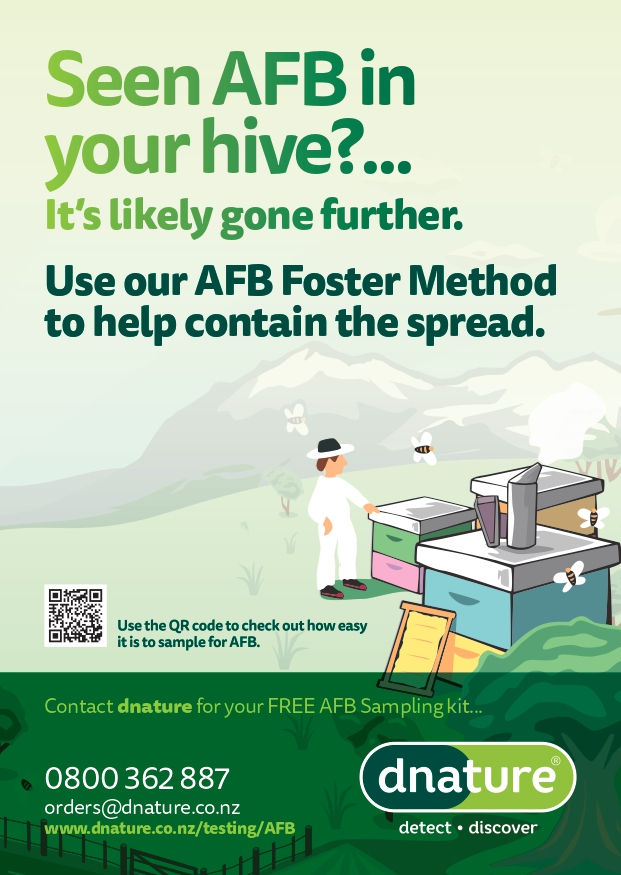



Comments